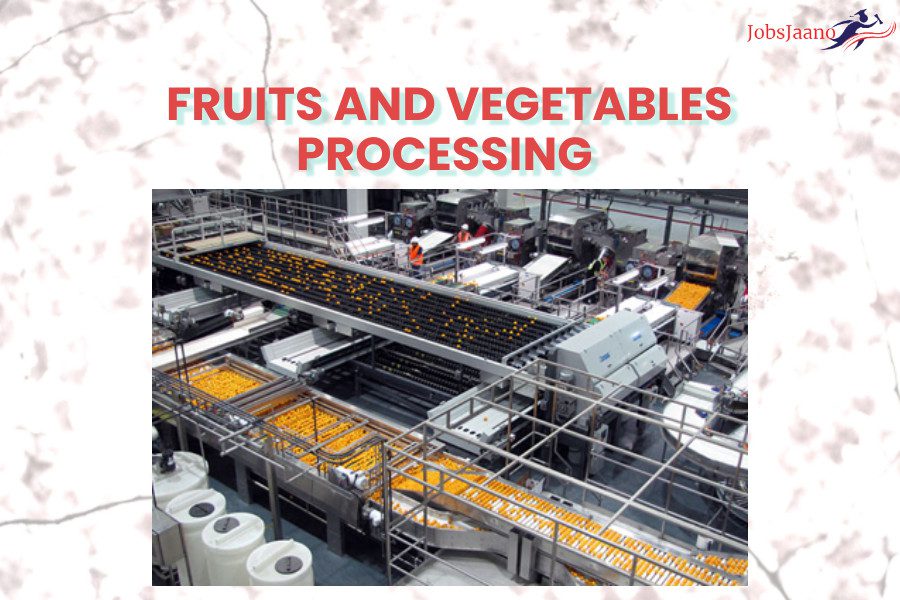Multiple Choice Questions on Fruits and Vegetables Processing
1. In autoclaved sausages which are stored unrefrigerated the primary hurdle is:
a. pH
b. Water activity
c. Sub lethal damage to spores
d. Eh
Ans. c
2. The basic principle of antibody based detection is the:
a. Binding of antigen with antibody
b. Binding of antibody to an enzyme conjugate
c. Binding of antibody to membrane
d. Binding of antigen to membrane
Ans. a
3. Milk and fruit juice are deaerated before they are allowed to flow through pasteurizer. This is done in order to:
a. Reduce fouling of pasteurizer
b. Increase the rate of heat transfer
c. Reduce oxidation deterioration
d. Decrease the rate of heat transfer
Ans. c
4. Intermediate moisture foods(IMF) are in the water activity range of:
a. 0.6 to 0.9
b. 0.8 to 0.9
c. 0.3 to 0.4
d. 0.3 to 0.6
Ans. a
5. The ideal packaging material for high pressure processing of foods is:
a. Glass
b. Flexible pouches
c. Metal cans
d. Rigid trays
Ans. b
6. The process commonly applied to tissue systems of fruits and vegetables prior to freezing to inactivate the enzymes is:
a. Heating
b. Pasteurization
c. Blanching
d. Scalding
Ans. c
7. Food which cannot be high pressure treated is:
a. Meat
b. Fruit juice
c. Bread
d. Jam
Ans. c
Multiple Choice Questions on Food Processing
8. The browning involved when bread is toasted is:
a. Dextrinisation
b. Caramalization
c. Enzymatic browning
d. Coagulation
Ans. a
9. A Maillard reaction is an example of the browning of:
a. Protein
b. Starch
c. Sugar
d. Protein and sugar
Ans. d
10. Mayonnaise does not separate into oil and vinegar because:
a. Sugar and salt are added to act as emulsifiers
b. Egg yolk is added to act as an emulsifier
c. Egg white is added to act as emulsifier
d. The ingredients are beaten vigorously so that oil and vinegar do not separate
Ans. b
11. The main purpose of blanching vegetables before freezing is to:
a. Increase color
b. Soften cellulose
c. Deactivate enzymes
d. Prevent the loss of Vitamin C
Ans. c
12. Advances in food packaging has increased food availability because the:
a. Information on the package assists consumers prepare the food
b. Food is easier to store and transport without spoilage
c. Packages are mostly recyclable and reusable
d. Packages are attractive to consumers
Ans. b
13. Ethylene is:
a. Gas given off during ripening of fruit
b. A naturally occuring enzyme
c. An alternative source of fuel
d. A gas used to stop fruit ripening
Ans. b
14. The following are examples of semi perishable foods:
a. Canned tomatoes, freeze dried coffee, tinned peaches
b. Milk, strawberries, meat
c. Frozen peas, brazil nuts, cereals
d. Bread, meat, dried apricots
Ans. a
Vegetable Quiz Questions and Answers
15. Enzymatic browning:
a. Occurs in raw fruit and vegetables
b. is caused by oxygen reacting with tannins
c. is a chemical reaction
d. All of the above
Ans. a

16. The sensory assessment of food involves judging food:
a. Using sight, taste, texture and aroma
b. Without looking
c. In a controlled situation
d. All of the above
Ans. a
17. Which of the following is true about fruits and vegetable processing?
a. They get spoled very fast and hence need to be consumed soon
b. They have high moisture content and should be kept in a cold, dark place
c. They’re tender and hence get spoiled easily
d. All of the above
Ans. d
18. Which of the following holds untrue with respect to jam making?
a. Boiling water to concentrate the mixture is an important step
b. The fruit is heated to soften it, extract pectin and then boiled rapidly to increase sugar content to about 70%
c. High methoxyl pectin is used in jam and low methoxyl in gelling agents in milk products
d. None
Ans. d
19. Clarification of milk works on the principle of centrifuge?
a. True
b. False
Ans. a
20. Which is correct with respect to staling of bread?
a. It is temperature dependent
b. It is called retrogradation
c. It is the reverse of gelatinization
d. All of the above
Ans. d
21. During processing of fruits and vegetables transport losses occur in general are:
a. 20%
b. 25%
c. 30%
d. 40%
Ans. c
Fruit and Vegetable Processing Quiz Questions and Answers
22. The most important product for preparation of fruit jelly is:
a. Acid
b. Sugar
c. Pectin
d. Sucrose
Ans. c
23. To remove field heat vegetables immediately after harvesting should be:
a. Stored
b. Pre cooled
c. Refrigerated
d. Kept open
Ans. b
24. In receipt of world vegetable production India is placed in the rank of:
a. First
b. Second
c. Third
d. Fourth
Ans. b
25. Aluminium foil has moisture vapour transmission rate as:
a. High
b. Medium
c. Low
d. Too low
Ans. c
Food Processing and Preservation mcqs
26. Blanching is commonly done in vegetable industries to inactivate:
a. Pathogen
b. Moulds
c. Microorganisms
d. Enzymes
Ans. d
27. The fruit ripening is due to the production of:
a. Acetylene
b. Ethylene
c. CO2
d. O2
Ans. b
28. The process commonly applied to tissue systems of fruits and vegetables prior to freezing to inactivate the enzymes is:
a. Heating
b. Pasteurization
c. Blanching
d. Scalding
Ans. c
29. Low acid foods are foods with a pH value of:
a. Greater than 4.5
b. Less than 3.7
c. 3.0 to 4.0
d. 3.5 to 4.0
Ans. a
30. Common additive added in the preparation of minimally processed food for the reduction of water activity is:
a. Sodium benzoate
b. Sodium chloride
c. Potassium sorbate
d. Ascorbic acid
Ans. b
Food and Vegetable Processing Books

